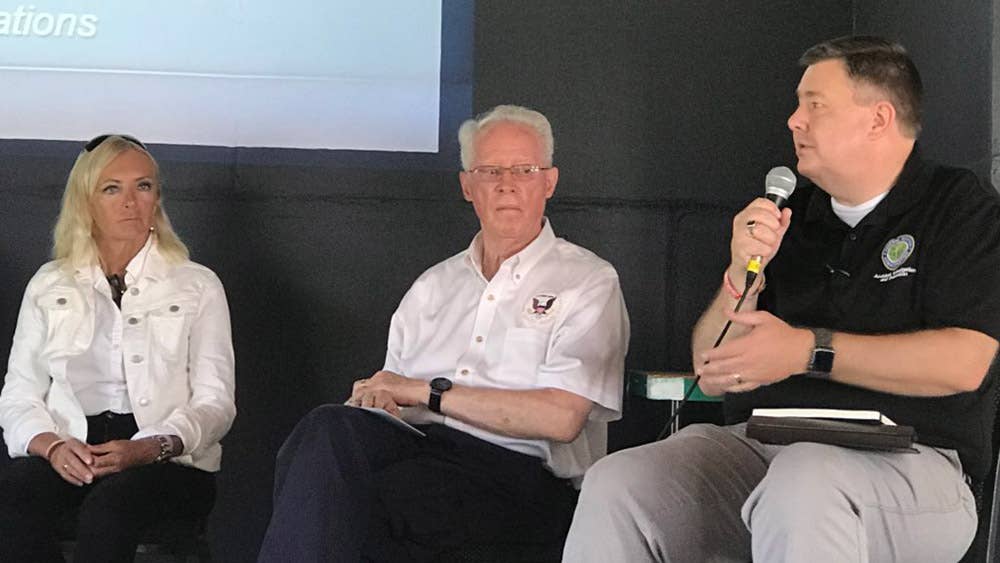
Patty Wagstaff asked questions and offered solutions to LOCI accidents. Rob Mark
The National Transportation Safety Board held its first ever road show event yesterday at AirVenture with an entire day focused on loss of control, an industry epidemic that claims more lives than any other single cause.
NTSB chairman Robert Sumwalt, a retired airline pilot, emphasized the importance of solving this nagging problem during his opening remarks by wondering how many people have lost their lives in the year since the NTSB last attended AirVenture. “Too many I think, which is why we’re here today.” It’s also the reason LOCI is still sits high on the NTSB’s Most Wanted List of Safety Issues.
Sumwalt handed the microphone to legendary aerobatic pilot Patty Wagstaff who said, "While loss of control numbers is not increasing, they're not going away either," adding that technology, ATC, weather reporting, digital flight controls and other new systems have created a much-improved safety record. "With all of this technology why are pilots flying in the best ATC system in the world, having trouble controlling their aircraft outside the normal flight envelope," she asked. "LOCI proceeded by a stall accounts for more fatal accidents across the board. Between 2008-2016 there were 1000 fatal accidents in GA. Last year 86 accidents occurred with 140 fatalities. This keeps happening because pilots are exceeding the critical angle of attack on their airplane." She said the startle factor that accompanies an unintended stall is also partially responsible for some of the slow reaction times of some pilots.
Wagstaff asked the audience to consider the safety statistics of military pilots. “Their record during upsets is much better than GA’s because those pilots train for it. I don’t think it’s a mystery. We are seeing increasing reliance on technology that does nothing for our stick and rudder skills.” While upsets and unusual attitudes might simply be new terms for old mistakes, Wagstaff said, “I don’t think these are actual mistakes. I don’t think this problem is about pilot error, but rather a training system error. You can’t blame the pilots of Air France 447 or Continental 3407 for not knowing what they didn’t know. These pilots were simply products of the system.”
Part 121 airlines will soon be required to integrate UPRT into their training programs, but all that extra time will be in a simulator. “That training doesn’t make your heart pound or give you sweaty hands,” Wagstaff said. “There are companies out there requiring pilots to take aerobatic or UPRT. It’s the right thing to do. We can fix this problem … and we don’t need more regulations either. Find a local source and take the training.”
Before leaving the stage at EAA Forum 7, Wagstaff posed a question to the audience. If you were a passenger on board an airliner, “Would you rather fly with a 500-hour pilot who possessed good stick and rudder skills, had taken aerobatic training in stalls, spins and recovery from unusual attitudes, or a 10,000-hour pilot who never taken any of that training and admitted to being uncomfortable venturing anywhere outside the airplane’s normal flight envelope?”
(Additional eNews photo credit to the FAA.)

Sign-up for newsletters & special offers!
Get the latest FLYING stories & special offers delivered directly to your inbox






